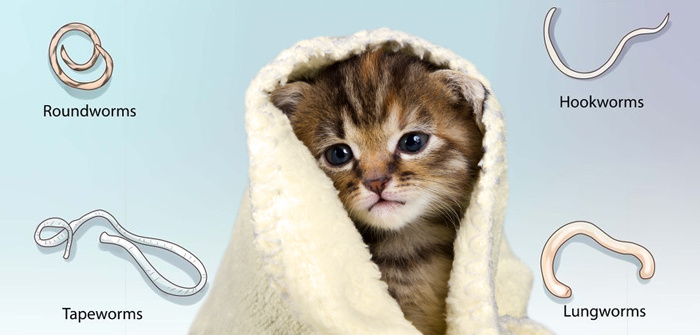Indoor cats are often seen as safe from the dangers of the outside world. However, they can still be at risk of getting worms. Understanding how indoor cats can become infected with worms is crucial for their health and well-being. By knowing the different ways worms can be transmitted, we can take the necessary steps to prevent and treat these infections.
One common way indoor cats can get worms is by ingesting infected fleas. Fleas can carry parasites such as tapeworms, which can be transmitted to cats when they groom themselves and accidentally swallow the fleas. Regular flea prevention measures, such as using flea treatments and keeping the environment clean, are essential to protect indoor cats from this source of infection.
Another way indoor cats can become infected with worms is through contact with a contaminated environment. This can include coming into contact with soil that contains worm eggs or larvae, interacting with other animals that are carriers of worms, or even nibbling on plants that may harbor parasites. It is important to be mindful of the cat’s surroundings and take preventive measures to minimize their exposure to potential sources of infection.
Ingesting Infected Fleas

Once inside the cat’s digestive system, the fleas can transmit various types of worms such as tapeworms, roundworms, and hookworms. These worms can cause a range of health issues for the cat, including weight loss, diarrhea, vomiting, and a dull coat. In severe cases, they can even lead to more serious complications.
To prevent indoor cats from getting worms through ingesting infected fleas, it is crucial to implement effective flea prevention measures. This can include using flea treatments recommended by veterinarians, regularly cleaning and vacuuming the living environment, and keeping the cat’s bedding clean. Additionally, it is important to regularly check the cat for any signs of fleas or flea dirt and seek prompt treatment if any are found.
Contaminated Environment

Another source of contamination for indoor cats is plants. Some plants, such as certain types of grass or herbs, can harbor worm eggs or larvae. When cats nibble on these plants, they can unknowingly ingest the parasites and become infected.
Furthermore, indoor cats can also come into contact with other animals that may be carriers of worms. This can happen if they encounter stray cats or interact with animals that have access to the outdoors. Direct contact with an infected animal can lead to the transmission of worms to the indoor cat.
To minimize the risk of worms in indoor cats, it is important to keep their environment clean and free from potential sources of contamination. Regularly cleaning the litter box, keeping plants that may harbor parasites out of reach, and preventing contact with stray or outdoor animals can help reduce the chances of infection.
In conclusion, while indoor cats may not have the same exposure to worms as outdoor cats, they can still become infected through their environment. Taking preventive measures and being aware of the potential sources of contamination can help keep indoor cats healthy and worm-free.
Frequently Asked Questions
-
- Q: Can indoor cats get worms?
A: Yes, indoor cats can get worms. Although they are less likely to be exposed to certain sources of infection, there are still ways for them to become infected.
-
- Q: How do indoor cats get worms from fleas?
A: Indoor cats can get worms by ingesting fleas that carry the parasites. Even if your cat doesn’t go outside, fleas can still find their way into your home. It is important to use regular flea prevention measures to protect your cat.
-
- Q: Can indoor cats get worms from their environment?
A: Yes, indoor cats can become infected with worms through contact with contaminated soil, plants, or other animals in their environment. This can happen if they have access to outdoor areas or if you bring in contaminated materials on your shoes or clothing.
-
- Q: How can I prevent my indoor cat from getting worms?
A: To prevent your indoor cat from getting worms, it is important to use regular flea prevention measures, keep their environment clean and free of contaminated materials, and have them regularly checked by a veterinarian for any signs of infection.
-
- Q: What are the signs that my indoor cat may have worms?
A: Signs that your indoor cat may have worms include weight loss, vomiting, diarrhea, a bloated abdomen, and a dull coat. If you notice any of these symptoms, it is important to consult with a veterinarian for proper diagnosis and treatment.
